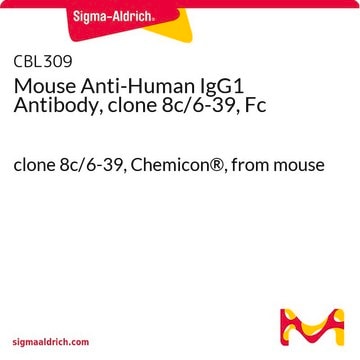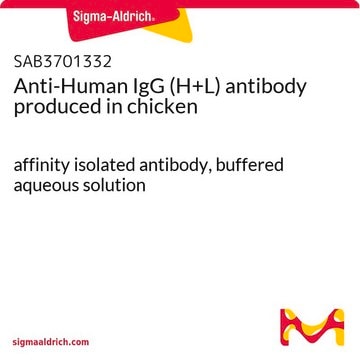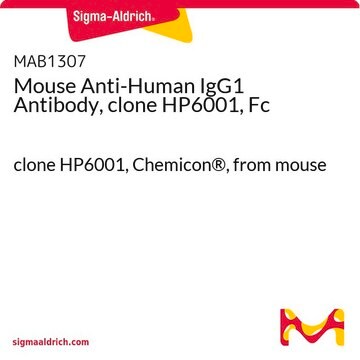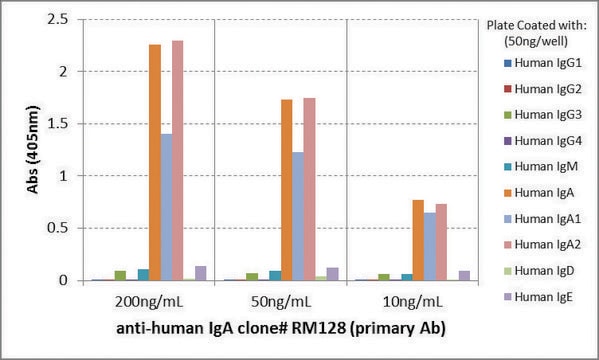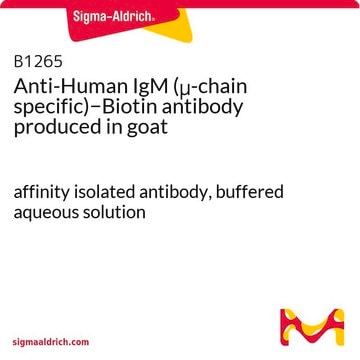B6775
Anti-Human IgG1−Biotin antibody, Mouse monoclonal
clone 8c/6-39, purified from hybridoma cell culture
Synonym(s):
Monoclonal Anti-Human IgG1 (Fc specific), Anti Human IgG1 - Monoclonal Anti-Human IgG1-Biotin antibody produced in mouse, Anti Human Igg1
About This Item
Recommended Products
biological source
mouse
conjugate
biotin conjugate
antibody form
purified from hybridoma cell culture
antibody product type
secondary antibodies
clone
8c/6-39, monoclonal
form
buffered aqueous solution
technique(s)
direct ELISA: 1:1,000
isotype
IgG2a
shipped in
dry ice
storage temp.
−20°C
target post-translational modification
unmodified
Looking for similar products? Visit Product Comparison Guide
General description
Monoclonal Anti-Human IgG1-Biotin antibody is specific for an epitope in the Fc region of the human IgG1. The product does not react with human IgG2, IgG3, or IgG4. This antibody clone (HP6019 clone) has been recognized as a useful human IgG1 specificity standard in the WHO/IUIS study .
Immunogen
Application
Physical form
Disclaimer
Not finding the right product?
Try our Product Selector Tool.
Storage Class Code
10 - Combustible liquids
WGK
nwg
Flash Point(F)
Not applicable
Flash Point(C)
Not applicable
Certificates of Analysis (COA)
Search for Certificates of Analysis (COA) by entering the products Lot/Batch Number. Lot and Batch Numbers can be found on a product’s label following the words ‘Lot’ or ‘Batch’.
Already Own This Product?
Find documentation for the products that you have recently purchased in the Document Library.
Customers Also Viewed
Oligodeoxynucleotide Triggers Formation of Anti-CpG
Antibodies
Our team of scientists has experience in all areas of research including Life Science, Material Science, Chemical Synthesis, Chromatography, Analytical and many others.
Contact Technical Service

